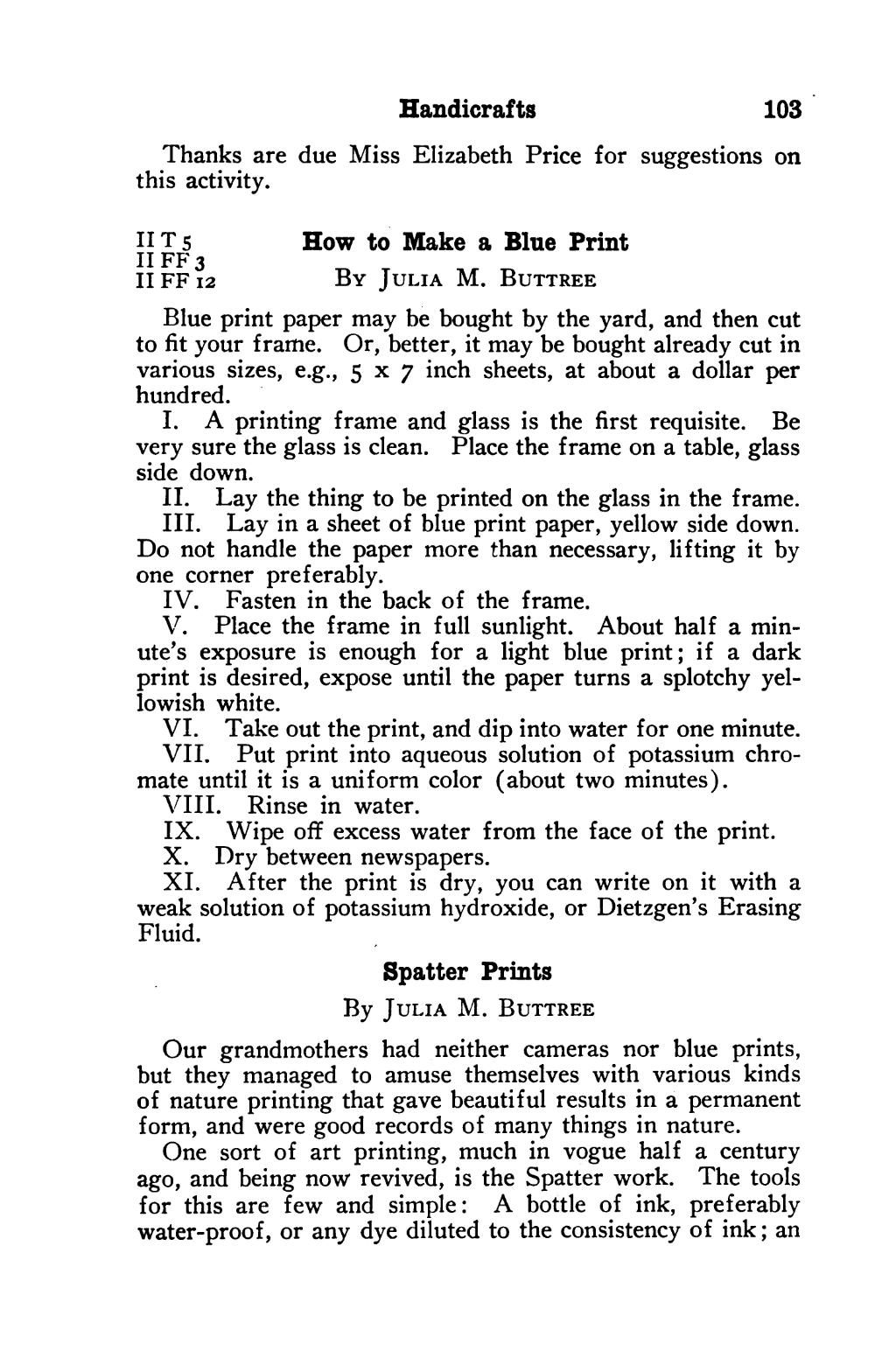Handicrafts 103 Thanks are due Miss Elizabeth Price for suggestions on this activity. I Ts How to Make a Blue Print 3 II FF 12 By JuLtia M. BuTTREE Blue print paper may be bought by the yard, and then cut to fit your frame. Or, better, it may be bought already cut in various sizes, e.g., 5 X 7 inch sheets, at about a dollar per hundred. — I. A printing frame and glass is the first requisite. Be very sure the glass is clean. Place the frame on a table, glass side down. II. Lay the thing to be printed on the glass in the frame. III. Lay ina sheet of blue print paper, yellow side down. Do not handle the paper more than necessary, lifting it by one corner preferably. IV. Fasten in the back of the frame. V. Place the frame in full sunlight. About half a min- ute’s exposure is enough for a light blue print; if a dark print is desired, expose until the paper turns a splotchy yel- lowish white. VI. Take out the print, and dip into water for one minute. VII. Put print into aqueous solution of potassium chro- mate until it is a uniform color (about two minutes). VIII. Rinse in water. IX. Wipe off excess water from the face of the print. X. Dry between newspapers. XI. After the print is dry, you can write on it with a weak solution of potassium hydroxide, or Dietzgen’s Erasing Fluid. Spatter Prints By Jutia M. BuTTREE Our grandmothers had neither cameras nor blue prints, but they managed to amuse themselves with various kinds of nature printing that gave beautiful results in a permanent form, and were good records of many things in nature. One sort of art printing, much in vogue half a century ago, and being now revived, is the Spatter work. The tools for this are few and simple: A bottle of ink, preferably water-proof, or any dye diluted to the consistency of ink; an
Stránka:roll 1931.djvu/119
Z thewoodcraft.org
Tato stránka nebyla zkontrolována
